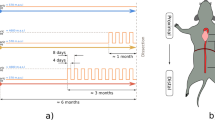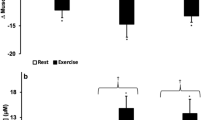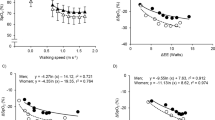Abstract
A FUNCTIONAL adaptation to hypoxia has been described in cardiac tissue from rats acclimatized to altitude1, but little information is available to explain why hibernating rodents are more tolerant to hypoxia than non-hibernating rodents, even at body temperatures near 37° C (ref. 2). Adaptations which enable hibernators to maintain physiological integrity at body temperatures of 3°–5° C could contribute to survival of severe hypoxia3; this interpretation, however, remains open to question. After exposure to hypoxia, no greater oxygen carrying capacity was found in the blood of a typical hibernator (Citellus lateralis) than in that of the rat4. Thus the ability of the hibernator to survive hypoxia could be associated with a functional adaptation to lowered pO2 at the tissue and/or cellular level.
This is a preview of subscription content, access via your institution
Access options
Subscribe to this journal
Receive 51 print issues and online access
$199.00 per year
only $3.90 per issue
Buy this article
- Purchase on Springer Link
- Instant access to full article PDF
Prices may be subject to local taxes which are calculated during checkout
Similar content being viewed by others

References
Poupa, O., Krofta, K., Prochazka, J., and Turek, Z., Fed. Proc., 25, 1243 (1966).
Hiestand, W. A., Rockhold, W. T., Stemler, F. W., Stullken, D. E., and Wiebers, J. E., Physiol. Zool., 23, 264 (1950).
Bullard, R. W., David, G., and Nichols, C. T., Bull. Harvard Mus. Comp. Zool., 124, 321 (1960).
Bullard, R. W., and Kollias, J., Fed. Proc., 25, 1288 (1966).
Blatteis, C. M., Int. J. Biometeor., 11, 51 (1967).
Torchiana, M. L., and Angelakos, E. T., Arch. Inter. Physiol. Biochem., 71, 155 (1963).
Hartley, L. W., Alexander, J. K., Modelski, M., and Grover, R. F., Amer. J. Physiol., 23, 839 (1967).
Weissler, A. M., Kruger, F. A., Baba, N., Scarpelli, D. G., Leighton, R. F., and Gallimore, J. K., J. Clin. Invest., 47, 403 (1968).
Burlington, R. F., and Wiebers, J. E., Comp. Biochem. Physiol., 17, 183 (1966).
Author information
Authors and Affiliations
Rights and permissions
About this article
Cite this article
BURLINGTON, R., MAHER, J. Effect of Anoxia on Mechanical Performance of Isolated Atria from Ground Squirrels and Rats acclimatized to Altitude. Nature 219, 1370–1371 (1968). https://doi.org/10.1038/2191370a0
Received:
Issue Date:
DOI: https://doi.org/10.1038/2191370a0
This article is cited by
-
The Muscle Ankyrin Repeat Proteins Are Hypoxia-Sensitive: In Vivo mRNA Expression in the Hypoxia-Tolerant Blind Subterranean Mole Rat, Spalax ehrenbergi
Journal of Molecular Evolution (2010)
-
Antioxidant activity in Spalax ehrenbergi: a possible adaptation to underground stress
Journal of Comparative Physiology A (2006)
-
Evidence for improved myocardial oxygen delivery and function during hypoxia in the mole rat
Journal of Comparative Physiology B (1988)
-
Myocardial electrolytes in hypobaric hypoxia
International Journal of Biometeorology (1977)
Comments
By submitting a comment you agree to abide by our Terms and Community Guidelines. If you find something abusive or that does not comply with our terms or guidelines please flag it as inappropriate.


